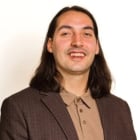Support strong Canadian climate journalism for 2025
Indigenous Peoples continue to push for greater inclusion — and now, they may have an ally in the Canadian delegation.
“It's part of our daily conversation with the team on the ground, and I do think we're close to an agreement on this,” said Minister of Environment and Climate Change Steven Guilbeault in an interview with Canada’s National Observer.
But there is still no formal progress toward including Indigenous Peoples as official bodies in negotiations.
“I do believe there needs to be a more substantive role,” said Ken Paul, a member of the Wolastoqey Nation at Neqotkuk, who spoke on a panel at the global biodiversity talks known as COP16.
“It's still a little bit paternalistic, honestly,” said Paul, who has done work at the international level in the past. “There is still no direct influence over the agreements, the initiatives and the direction of where the funding programs are going from these talks.”
A transformation took place in Montreal two years ago, when Indigenous Peoples pushed for greater inclusion in the system, said Oscar Soria, director of The Common Initiative. Change has come a long way since many countries did not recognize Indigenous Peoples even 30 years ago, Soria said. However, more international declarations like UNDRIP have altered the situation and Soria says it is “inevitable” that Indigenous Peoples will have a seat at the table some day.
There are also concerns that Indigenous Peoples' rights are being diluted with the language currently used by the Convention on Biological Diversity and other U.N. bodies. Indigenous Peoples and local communities, which often represent those of African descent, women and youth, are grouped as equals in the U.N. language and documents, including those from COP16.
Some Indigenous groups are pushing to remove the conflation of what is regularly called Indigenous Peoples and Local Communities, or IPCLs for short. The integration puts Indigenous Peoples at risk of “losing identity and recognition,” said Juan Carlos Paya Torrijos, member of the general coordination team of the Organización Nacional de los Pueblos Indígenas de Colombia (OPIAC).
“There is a danger that government and international organizations will treat both groups homogeneously, when our structures and realities are different,” Torrijos said.
Sara Olsvig, president of the Inuit Circumpolar Council, said many Indigenous communities, who now hold distinct rights laid out in UNDRIP, want a distinct status and mechanism to advocate at the same table as countries.
Stakes are high for Indigenous rights while nations strive to meet global biodiversity targets that seek to conserve 30 per cent of the world’s lands and waters, as negotiated in the Montreal-Kunming agreement two years ago. Recent research has shown that 39 per cent of global lands in healthy ecological conditions are managed or governed by Indigenous Peoples.
“This does not happen by coincidence or chance: it is because these peoples have managed to preserve their cultures, knowledge systems, and governance structures, and to resist (violent) incursions into their lands, that the ecosystems on their territories are preserved,” Soria said.
There are still concerns from Indigenous nations that conservation led by countries could diminish Indigenous rights and title to lands, a historical reality pervasive in Canada until recent years. For those pushing to create a distinct status of Indigenous Peoples separate from IPLCs, any opening could risk the loss of rights and lands.
“So it's a huge issue globally, and Indigenous Peoples from all around the world have stood together over the past years to conduct concerted efforts to get rid of this conflation,” Olsvig said.
The status quo does not recognize Indigenous Peoples' own representative institutions, Olsvig said. Instead, organizations are recognized as non-governmental organizations with a similar status and influence as environmental groups.
“We are not really an NGO. We are an Indigenous Peoples organization, and on a broader term within the U.N. under the U.N. Human Rights Council and under the U.N. General Assembly,” she said.
Part of the reason why Indigenous Peoples remain without distinct status is simply because much of the language of Indigenous Peoples and local communities was developed prior to the United Nations development of UNDRIP, Olsvig said. Also, colonization continues to restrict the upholding of inherent rights of Indigenous nations and their self-determination.
“It's politically difficult,” Olsvig said, to create a distinct status for Indigenous Peoples with increased influence on negotiations. “It might also be expensive, so I could see many reasons for why some states, and especially industry, would not support that this right is truly implemented globally.”
And yet, Indigenous Peoples continue to push for more, rather than be relegated to non-governmental status.
“It's also a matter of principle for us to not leave any small sort of cracks and openings in text produced by the U.N. for states and industry to have any excuses for not upholding the rights of Indigenous Peoples,” she said.
In an interview with Canada’s National Observer, Guilbeault said creating a permanent body of Indigenous Peoples is a big priority for the federal government and Indigenous communities across Canada. Guilbeault remains active in talks with other national leaders, including the vice president of Colombia, host nation for COP16.
— with files from John Woodside
Matteo Cimellaro / Canada’s National Observer / Local Journalism Initiative







Comments